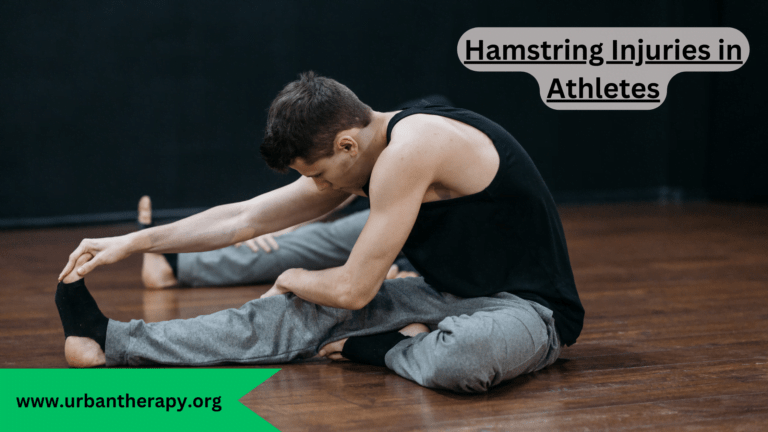The shoulder is a complex joint that allows a wide range of motion for your arm. It is a ball and socket joint, formed by the round head of the humerus (upper arm bone) fitting into the shallow socket of the scapula (shoulder blade). A group of muscles and tendons called the rotator cuff surround the shoulder joint, allowing the arm to rotate and move in many directions.
Shoulder Anatomy
The shoulder joint is a ball and socket joint, allowing any joint’s widest range of motion. The rounded head of the humerus (upper arm bone) forms the ball which fits into the shallow socket of the scapula (shoulder blade). A group of four muscles and tendons called the rotator cuff surround the joint and initiate shoulder motions. Numerous bursae (fluid-filled sacs) cushion the joint from friction during movement.

Common Causes of Shoulder Pain When Lifting the Arm
Rotator Cuff Injuries
The rotator cuff is comprised of four muscles (supraspinatus, infraspinatus, teres minor, and subscapularis) and their tendons that initiate shoulder motion and stabilize the shoulder joint. Rotator cuff injuries are the most common cause of shoulder pain. According to research, supraspinatus tendinopathy (damage to the tendon) is the most frequently occurring rotator cuff disorder, seen in up to 50% of patients with shoulder pain (Ann Transl Med, 2017). Overhead repetitive movements can lead to rotator cuff impingement, tendinitis, or tears. Pain is felt when lifting the arm away from the body.
Self-diagnosis or Symptoms
- Pain when lifting the arm away from the body
- Tenderness over rotator cuff tendons
- Weakness with overhead arm motions
- Limited range of motion, especially external rotation
Bursitis
There are over 150 bursae, fluid-filled sacs that reduce friction between bone and soft tissue, around the shoulder joint. Inflammation of these bursae is called bursitis. A systematic review in Rheumatology International found subacromial bursitis is present in up to 70% of patients with shoulder pain. The subacromial bursa between the acromion and rotator cuff is commonly involved. Bursitis can be caused by repetitive overhead motions and arm lifts. Pain may also be felt at night when lying on the affected shoulder.
Self-diagnosis or Symptoms
- Pain with overhead reaching, which may worsen at night
- Tenderness near the tip of shoulder over inflamed bursa
- Pain when pressing on the affected bursa
- Crunching/crackling sound (crepitus) from inflamed bursa
Frozen Shoulder or Adhesive Capsulitis
Frozen Shoulder, also known as Adhesive capsulitis, involves chronic inflammation and thickening of the shoulder joint capsule, restricting motion. Per the Journal of Shoulder and Elbow Surgery, adhesive capsulitis is diagnosed in up to 20% of people with shoulder pain. The condition progresses through stages of increasing stiffness and loss of active and passive range of motion over several months. Pain is predominant in the early stages and then improves as stiffness sets in. Diabetes has been associated with increased frozen shoulder risk.
Self-diagnosis or Symptoms
- Gradual onset stiffness and loss of arm motion
- Restricted passive and active range of motion
- Thickened/firm feel to shoulder joint capsule
- Pain at end-ranges of shoulder motion
- Risk factor: Diabetes
Arthritis
Osteoarthritis of the glenohumeral shoulder joint occurs over time as the cartilage wears down. According to research in Seminars on Arthritis and Rheumatism, radiographic shoulder osteoarthritis prevalence is about 7% in ages under 60 and increases to 26% in those over age 80. Inflammatory arthritis like rheumatoid arthritis can also affect the shoulder. Morning shoulder stiffness, loss of range of motion, and pain with movement are common arthritis symptoms.
Self-diagnosis or Symptoms
- Deep shoulder joint aching, worse with activity
- Morning shoulder stiffness over 30 minutes
- Grating/crunching sound and sensation
- Bony enlargements felt around the shoulder joint
- Limited range of motion, especially internal rotation
Tendinitis
Tendinitis refers to inflammation of the tendons around the shoulder joint. It often results from repetitive overuse of the shoulder. Common forms include biceps tendinitis affecting the biceps tendon at the front of the shoulder and supraspinatus tendinitis affecting the rotator cuff tendon. Tendinitis causes localized shoulder pain that is aggravated by lifting the arm overhead or away from the body. There may be tenderness when pressing over the inflamed tendon. Anti-inflammatory medications, rest, and physical therapy can help manage tendinitis.
Self-diagnosis or Symptoms
- Localized shoulder pain worse with lifting/overhead motions
- Tenderness when pressing on the affected tendon
- Painful arc of motion with active shoulder use
Pinched Nerve
A pinched or compressed nerve in the neck can radiate pain into the shoulder and arm. This often results from a herniated disc or bone spur in the cervical spine irritating an adjacent nerve root. Symptoms may include shoulder pain, numbness or tingling down the arm, and neck pain. Doctors can treat pinched nerves conservatively with rest, physical therapy, anti-inflammatory medications, or cervical epidural steroid injections. In severe cases, doctors may need to perform surgery to decompress the impinged nerve.
Self-diagnosis or Symptoms
- Shoulder/arm pain, numbness or tingling
- Possible neck pain or reduced neck mobility
- Weakness or clumsiness using the affected arm
Fracture
Fractures of the bones making up the shoulder joint most often occur from a fall onto an outstretched arm. The clavicle (collarbone), scapula (shoulder blade), proximal humerus (upper arm), or glenoid socket may be fractured. Symptoms include severe shoulder pain, swelling, bruising, deformity, and inability to move the arm without intense pain. Immobilization, pain medication, and surgical repair are often needed based on fracture type and location.
Self-diagnosis or Symptoms
- Severe shoulder pain after injury/fall onto arm
- Visible bruising, swelling, deformity
- Inability to move the arm without significant pain
Dislocation
When the humeral head is forced out of the shallow glenoid socket, a shoulder dislocation occurs. This can happen from a fall, contact injury, or when making a forceful arm movement. Dislocations are extremely painful and cause impaired arm function and mobility. A doctor needs to promptly reduce (pop back into place) the shoulder joint, which may require sedation or anesthesia. Stabilizing the joint necessitates sling immobilization and physical therapy.
Self-diagnosis or Symptoms
- Severe shoulder pain after fall or injury
- Deformity – shoulder appears out of socket
- Limited arm mobility and function
Impingement Syndrome
When the acromion bone of the scapula rubs against or presses on the underlying rotator cuff tendons, it leads to irritation and inflammation of the tendons. Repetitive overhead reaching commonly causes this impingement syndrome, narrowing the space between the acromion and rotator cuff. Symptoms include pain and weakness when lifting the arm. Anti-inflammatory medications, physical therapy, and cortisone injections can help treat impingement. Severe cases sometimes require surgery to reshape the acromion.
Self-diagnosis or Symptoms
- Shoulder pain/weakness with lifting arm
- Localized tenderness under acromion
- Painful arc of motion between 60-120 degrees
When to See a Doctor?
See your orthopedic if shoulder pain persists for more than a few days or causes significant disability. Your doctor will examine the shoulder joint and surrounding structures and may order imaging tests to confirm the diagnosis. Getting an accurate diagnosis is key to determining appropriate treatment.
Treatment Options
Treatment depends on the underlying condition but may include:
- Resting the shoulder
- Ice packs to reduce pain and inflammation
- NSAIDs like ibuprofen to relieve pain
- Steroid injections into joint or bursa
- Physical therapy to improve mobility and strength
- Surgery to repair damaged structures
Proper diagnosis and treatment can typically manage shoulder pain when lifting the arm effectively. Regular exercise to maintain mobility and strength is also beneficial for preventing shoulder problems. See your doctor if you have persistent shoulder pain to determine the cause and get appropriate care.

Chris Hanks is an experienced physical therapist based in Austin, Texas. He earned his Doctor of Physical Therapy degree from the University of Texas at Austin in 2005 after completing his Bachelor of Science in Kinesiology in 2002. Dr. Hanks has been a licensed PT in Texas since 2005. He began his career at Central Texas Rehabilitation Hospital before moving to Austin Sports Medicine Center in 2010. In 2015, Dr. Hanks opened his own clinic, Capital City Physical Therapy, where he continues to treat patients.






